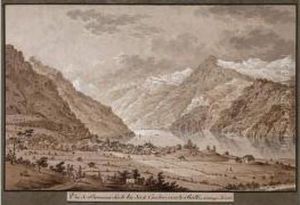Franz Xaver Triner Paintings
Franz Xaver Triner was a 19th-century Swiss painter and illustrator known for his detailed landscapes, portraits, and genre scenes. Born on February 16, 1821, in Einsiedeln, Switzerland, Triner showed an early interest in art and was encouraged to pursue his passion. Although he is not as widely recognized as some of his contemporaries, Triner's works do reflect the artistic movements and sensibilities of his time, particularly those of the Biedermeier period, with its focus on simplicity, emotion, and middle-class domesticity.
Triner received his initial art education in his homeland, but like many artists of the era, he sought to further his studies abroad. He spent significant periods in Munich and Paris, two key art centers of the 19th century, where he was exposed to a variety of artistic styles and influences. In Munich, he would have encountered the works of the Nazarenes, a group of German Romantic painters who aimed to revive honesty and spirituality in Christian art. In Paris, he was exposed to the burgeoning Realist movement, which emphasized the depiction of everyday life and the working class.
Despite these influences, Triner's work remained individualistic, often characterized by a warmth and intimacy. He had a particular talent for capturing the subtleties of light and atmosphere, which imbued his landscapes with a sense of realism and presence. His portraits, on the other hand, were noted for their psychological depth and character portrayal.
Triner returned to Switzerland, where he continued to paint and exhibit his work. He participated in various exhibitions, and his art was well-received, earning him a respectable place among Swiss artists of the time. His paintings are now part of several Swiss collections, serving as a testament to the country's rich artistic heritage of the 19th century.
Franz Xaver Triner passed away on June 20, 1900, in Munich, Germany. Although he did not achieve the same level of fame as some of his contemporaries, his contributions to Swiss art during the 19th century remain significant. His works continue to be appreciated for their beauty, craftsmanship, and portrayal of 19th-century life.


